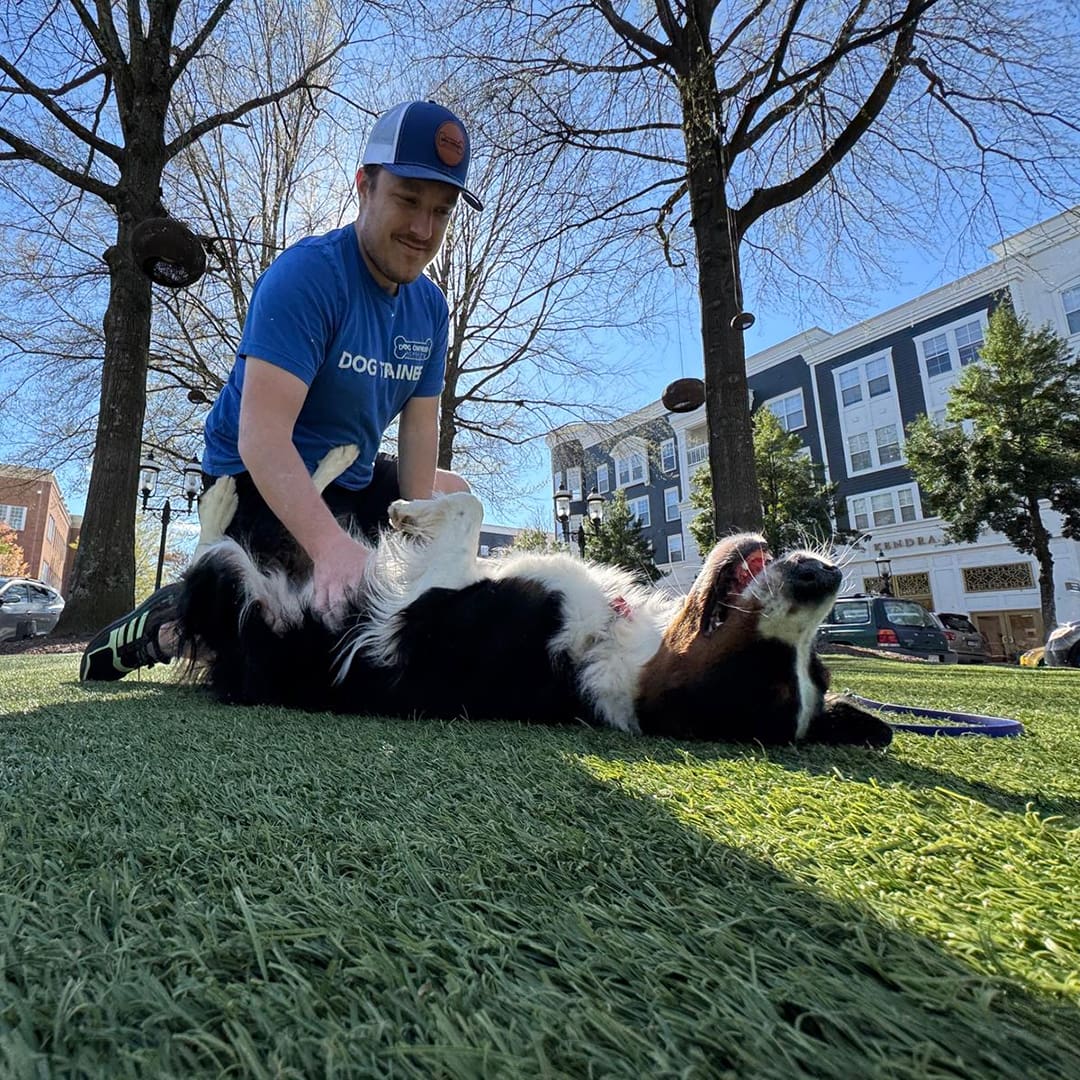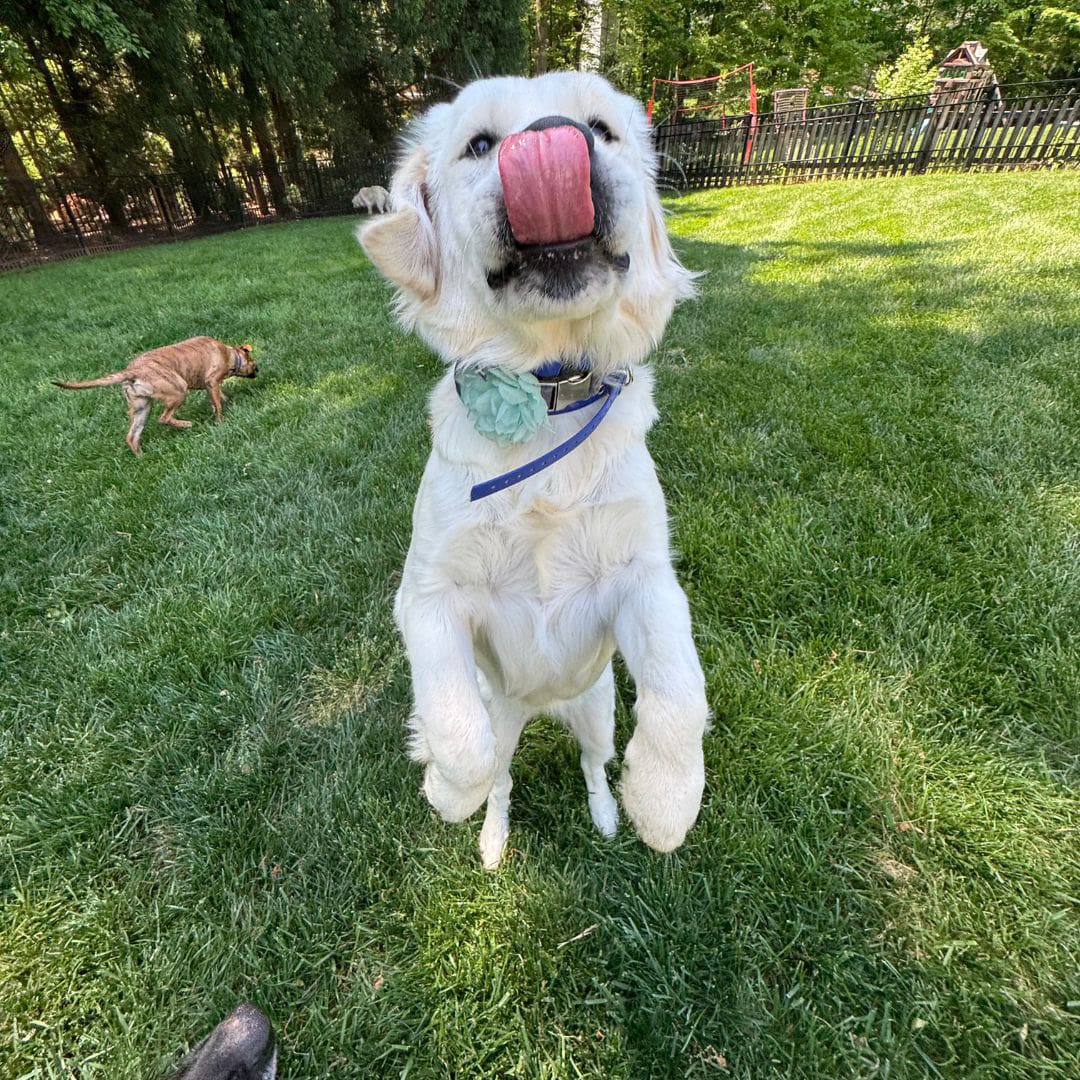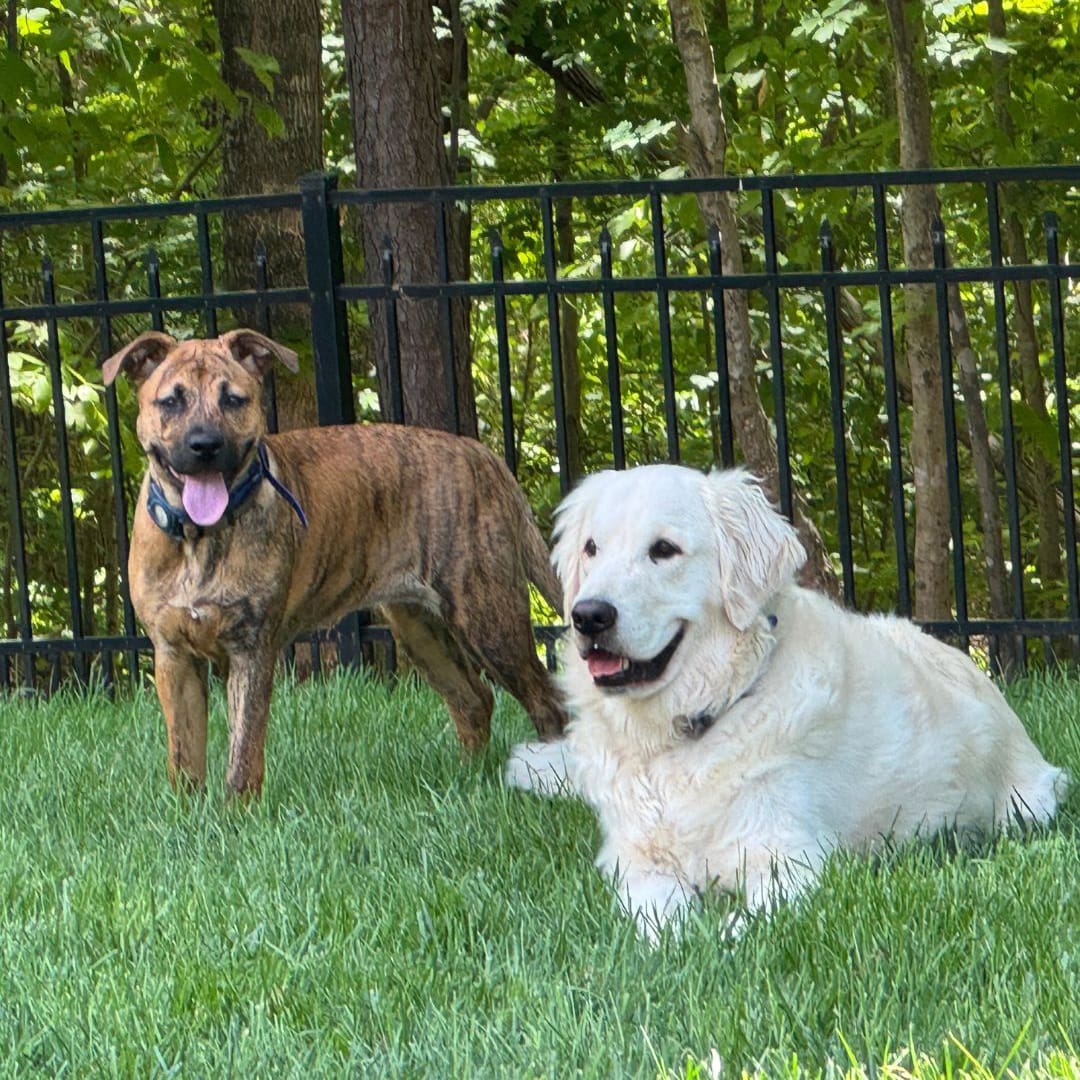An exuberant dog launching into the air can be a startling, if not unwelcome, greeting. While often rooted in enthusiasm, jumping on people can be problematic, especially with guests, children, or those less steady on their feet. This guide offers a comprehensive approach to training polite dog greetings and building essential dog impulse control training, fostering a harmonious relationship that respects your dog’s unique personality while ensuring good manners. At Dog Owners Academy, we believe in building this understanding, not just demanding obedience.
Table of Contents
- Why Do Dogs Jump on People? Understanding the Paws Behind the Problem
- The Foundation: Core Principles for Success in Polite Dog Greetings
- Teaching Your Dog Polite Greetings: “Four on the Floor” and Beyond
- Boosting Self-Control: Essential Dog Impulse Control Training Exercises
- Managing Real-Life Scenarios: Greetings with Guests
- Common Mistakes to Avoid (What NOT To Do) When Training Polite Dog Greetings
- The Bigger Picture: Exercise, Mental Stimulation, and Overall Well-being
- Troubleshooting: When Polite Dog Greetings Go Awry
- Frequently Asked Questions (FAQs) About Dog Jumping
- When to Call in the Pros: Seeking Help from a Certified Trainer
- Conclusion: Cultivating Calm and Connection
Why Do Dogs Jump on People? Understanding the Paws Behind the Problem
To effectively stop dog jumping, it’s crucial to understand why they do it. Jumping is often a natural canine behavior with various motivations.
Excitement & Enthusiasm
Dogs, especially puppies and young adults, jump up to greet people at face level, mimicking how puppies greet their mothers (Animal Behavior College). It’s their way of saying an enthusiastic “hello!”
Attention-Seeking
Dogs learn quickly what actions get a reaction. If jumping results in any form of attention—even if it’s a scolding or being pushed down—it can reinforce the behavior (AKC). They find that jumping makes humans interact with them.
Learned Behavior
Sometimes, owners inadvertently teach their dogs to jump. Petting a dog that jumps up, even occasionally, communicates that jumping is an acceptable way to solicit affection. Over 90% of dogs jump on household members at some point, highlighting how easily this can become ingrained (ScienceDirect).
Lack of Alternative Skills
Often, dogs jump simply because they haven’t been taught a more appropriate way to greet people. They don’t know what else to do with their excitement.
The Foundation: Core Principles for Success in Polite Dog Greetings
Achieving polite dog greetings and reliable dog impulse control training relies on a few foundational principles. These tenets are central to the Dog Owners Academy philosophy, where we aim to improve the human-canine bond.
Positive Reinforcement: The Science of Rewarding Good Choices
Positive reinforcement involves rewarding desired behaviors, making them more likely to occur in the future (AKC). Instead of punishing jumping, you’ll teach your dog that polite actions like sitting or keeping four paws on the floor earn them what they want: attention, praise, or treats.
Consistency is Key: A Unified Front
Everyone in the household, and ideally guests too, must consistently apply the same rules and training methods (Humane World for Animals). If one person allows jumping while another discourages it, your dog will become confused, slowing down progress.
Patience and Realistic Expectations: The Journey of Training
Changing an ingrained behavior takes time and patience. There will be good days and setbacks. Celebrate small victories and remember that building new habits is a gradual process.
Management vs. Training: A Two-Pronged Approach
- Management involves preventing your dog from practicing the unwanted behavior (e.g., using a leash, crate, or baby gate when guests arrive) while they are still learning.
- Training is actively teaching your dog the desired alternative behaviors. Both are essential for success.
Teaching Your Dog Polite Greetings: “Four on the Floor” and Beyond
The goal is to teach your dog that keeping “four on the floor” or offering a calm sit is far more rewarding than jumping.
Step 1: The “Ignore the Jump” Technique
When your dog jumps:
- Immediately turn your back.
- Fold your arms and look away. Avoid eye contact and do not speak to your dog.
- The instant all four of your dog’s paws are on the floor, turn back and calmly praise or offer a treat.
- If they jump again, repeat the process. They will learn that jumping makes you “disappear,” while calm behavior brings you back.
Step 2: Teaching an Alternative Behavior – “Sit” for Greetings
“Sit” is an incompatible behavior with jumping; a dog cannot sit and jump simultaneously.
- As someone approaches (or you enter the room), cue your dog to “Sit” before they have a chance to jump.
- Generously reward the “Sit” with praise and a high-value treat.
- If your dog jumps up from the sit, use the “ignore” technique, then ask for a “Sit” again once calm.
- Consider exploring our relationship-based methods for more on our training philosophy.
Step 3: Rewarding “Four on the Floor”
Catch your dog being good!
- When your dog approaches someone or greets you with all four paws on the ground, immediately reward this calm behavior with praise and treats.
- You can also scatter a few treats on the floor as someone approaches. This encourages your dog to sniff and keep their head down, rather than jumping up.
Step 4: “Go to Place/Mat” for Calm Greetings
Training your dog to go to a designated bed or mat when guests arrive can be an excellent management and training tool.
- Teach a solid “Go to Place” cue.
- Practice with increasing distractions, rewarding your dog for staying on their place as people enter or move around.
- This gives them a clear job to do and a way to be part of greetings without being underfoot or jumping.
Boosting Self-Control: Essential Dog Impulse Control Training Exercises
Jumping is often a symptom of poor impulse control. By teaching your dog to think before acting, you address the root cause.
Why Impulse Control Matters for Jumpers
Dogs that jump often lack the ability to manage their excitement. Dog impulse control training teaches them to pause, consider their actions, and choose a more appropriate response.
Exercise 1: “Leave It” – The Power of Resisting Temptation
The “Leave It” command teaches your dog to ignore a desired item.
- Start with a low-value item on the floor, covered by your hand. When your dog stops sniffing or pawing at your hand, praise and reward from your other hand.
- Gradually progress to uncovered items and higher-value temptations (Whole Dog Journal). This builds their ability to resist impulses.
Exercise 2: “Wait” or “Stay” – Building Patience
“Wait” (a short pause) or “Stay” (a longer duration) are invaluable.
- Doorways: Ask your dog to “Wait” before going in or out.
- Mealtimes: Have them “Wait” calmly before you put their food bowl down.
- Play: Ask for a “Wait” before throwing a toy.
Exercise 3: The Slow Treat Game
- Hold a treat in your fist.
- Slowly move your fist towards your dog’s mouth.
- If they lunge or try to mug your hand, quickly pull it back.
- Repeat, only giving the treat when they wait patiently for your hand to reach them (Khris Erickson).
Exercise 4: Doorbell/Knock Practice
Desensitize your dog to the arrival of guests.
- Have someone ring the doorbell or knock.
- Initially, reward your dog for any calm behavior, even if it’s just a moment of quiet.
- Gradually shape this into a “Sit” or “Go to Place” when they hear the cue. Practice often with no actual guests arriving.
Exercise 5: Calm Crate Exits
If your dog uses a crate, require calm behavior before they are allowed out.
- Approach the crate. If your dog is bouncing or barking, wait.
- Only open the crate door when they are calm and quiet.
- Ask for a “Sit” or “Wait” before they exit.
Managing Real-Life Scenarios: Greetings with Guests
Guest arrivals are often prime time for jumping. Proactive management is key.
Setting Up for Success
- Leash Management: During initial training, have your dog on a leash when guests arrive. This gives you control and allows you to guide them into a “Sit” or prevent jumping.
- Communicate with Guests: Before guests enter, explain your training plan. Ask them to ignore jumping and only give attention when your dog is calm or sitting.
- Barriers: Use baby gates or keep your dog in another room initially if they are too overwhelmed or if guests are not able to help with training.
What Your Guests Should Do (and Not Do)
- Instruct guests to turn away and ignore your dog if they jump.
- Provide guests with treats to give your dog for polite sits or four-on-the-floor behavior.
- Advise guests to keep greetings low-key initially to avoid over-exciting your dog.
Practicing with Different People
Once your dog is doing well with household members, gradually introduce different people to practice with, increasing the challenge slowly.
Common Mistakes to Avoid (What NOT To Do) When Training Polite Dog Greetings
Certain reactions can inadvertently worsen jumping or damage your relationship with your dog.
Physical Corrections
Kneeing a dog in the chest, pushing them off, or using leash jerks are aversive methods. These can cause fear, injury, or make your dog anxious about greetings (Dr. Lisa Radosta). They don’t teach your dog what to do.
Yelling or Scolding
To a dog craving attention, even negative verbal interaction can be reinforcing (AKC). Yelling can also increase excitement levels.
Inconsistent Reinforcement
If jumping is sometimes ignored, sometimes “corrected,” and sometimes inadvertently rewarded (e.g., by a guest who thinks it’s cute), your dog will be confused. Consistency is paramount (Humane World for Animals).
Giving Up Too Soon
Behavior change takes time. Don’t get discouraged if you don’t see results immediately. Stick with the positive plan.
The Bigger Picture: Exercise, Mental Stimulation, and Overall Well-being
A dog’s general state of mind and physical condition can greatly influence their tendency to jump.
- Sufficient Exercise: A tired dog is often a calmer dog. Ensure your dog gets adequate physical activity appropriate for their age, breed, and health.
- Mental Stimulation: Puzzle toys, training games, and learning new skills help to tire a dog’s mind and can reduce overall excitability and the need to stop dog jumping through other means.
Troubleshooting: When Polite Dog Greetings Go Awry
Even with the best plans, you might encounter challenges.
“My dog only jumps on certain people.”
Your dog may have learned that some individuals are more likely to reward jumping (even if unintentionally) or that they can “get away with it” with certain people. Maintain consistency with everyone. Identify if these individuals are more exciting or greet the dog in a way that escalates energy.
“My dog used to be good but is regressing.”
Regression can happen. Review your training: Are you still being consistent? Are rewards high-value enough? Has something new triggered excitement (e.g., new visitor patterns)? Go back a few steps in your training and reinforce the basics.
“My puppy is a jumping machine!”
Puppies are naturally exuberant and explore the world with their paws and mouths. Start dog impulse control training early (it can begin around 8-12 weeks old, as suggested by freakonaleashdogtraining.com). Focus on rewarding calm behavior and managing interactions to prevent jumping from becoming a habit. Check out our puppy training services for more guidance.
Frequently Asked Questions (FAQs) About Dog Jumping
Q1: Why does my dog jump on people?
Dogs jump for various reasons: excitement, seeking attention, as a natural greeting behavior, or because they haven’t learned an alternative polite way to greet (Animal Behavior College, AKC).
Q2: How long does it take to train a dog not to jump?
This varies greatly depending on the dog’s age, history of jumping, consistency of training, and the owner’s dedication. Some dogs learn quickly within weeks, while for others, it may take several months of consistent effort.
Q3: Is it okay to use punishment to stop dog jumping?
No. Punishment like kneeing, yelling, or leash jerks can create fear, anxiety, and potentially aggression. It doesn’t teach the dog what you want them to do and can damage your bond (Dr. Lisa Radosta). Positive reinforcement is more effective and humane.
Q4: What if my dog only jumps on guests?
This is common. Manage the situation by using a leash, crate, or baby gate when guests arrive. Instruct guests on how to interact (or not interact if the dog jumps) and reward your dog for calm behavior. Practice setups are key.
Q5: Can old dogs learn not to jump?
Absolutely! While it might take a bit more time to change long-standing habits, old dogs are perfectly capable of learning new behaviors, including polite dog greetings, with patience and positive reinforcement.
When to Call in the Pros: Seeking Help from a Certified Trainer
While many owners can successfully address jumping, there are times professional help is beneficial:
- If the jumping is accompanied by aggression or extreme fear.
- If you’re struggling to make progress despite consistent effort.
- If you feel overwhelmed or unsure how to proceed.
A qualified, positive reinforcement-based trainer, like those at Dog Owners Academy, can provide personalized guidance and help you develop an effective training plan. We focus on preserving your dog’s unique personality while fostering obedience.
Conclusion: Cultivating Calm and Connection
Teaching your dog polite dog greetings and improving their dog impulse control training is an investment in a more peaceful and enjoyable life together. By understanding the “why” behind jumping and consistently applying positive training techniques, you can guide your dog towards calmer, more respectful interactions. This journey not only resolves a common behavior issue but also strengthens the bond you share, built on mutual understanding and respect – a cornerstone of the Dog Owners Academy approach.
Ready to cultivate a calm and respectful relationship with your dog? Dog Owners Academy in Charlotte, NC, specializes in personalized training that honors your dog’s spirit. Schedule your free in-home consultation today and let’s work together to achieve polite dog greetings.
Opening Hours
M-Sa: 10am - 7pm
Address
1111 Central Ave., Charlotte, NC 28204
Phone
844 864 3647




